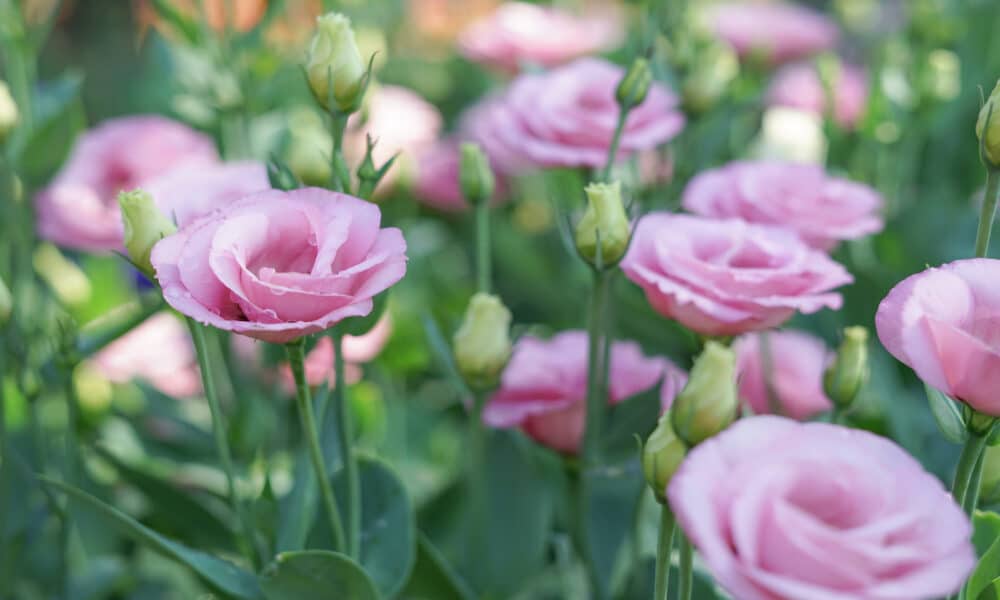Lisianthus, also known as the “Desert Rose,” is a prolific flower that captivates hearts with its delicate beauty and variety of colors. Its scientific name, Eustoma grandiflorum, reflects the greatness of its plant Flowers.
In this guide, you’ll better understand its fascinating origin, stunning characteristics, detailed technical sheet, basic planting care and propagation techniques so you can fully appreciate this floral gem in your garden.
Source: Verin / Shutterstock
Origin and history
Lisianthus is native to the Americas, especially the warm regions of the southern United States, Mexico, the Caribbean, and South America.
Its charming beauty made it conquer the world, making it widely present in flower arrangements and ornamental gardens.
a plants It gained popularity in the 18th century, and since then, its elegant presence has been appreciated in diverse cultures around the world.
Characteristics of Lisianthus
Lisianthus is famous for its rose-like flowers, but with its own uniqueness. Its soft petals and vibrant colors, which range from pure white to soft shades of pink, purple and blue, provide an enchanting visual spectacle.
With long legs and Green leaves The leafy plant offers an attractive visual contrast in flower arrangements.
data sheet
- Scientific name: Eustoma grandiflorum
- Family: Gentian
- Height: ranges from 30 to 60 cm
- Life cycle: Biennial or perennial, depending on growing conditions
- Sun exposure: full sun to partial shade
- Soil: well-drained and rich Organic materials
- Watering: Moderate, avoiding waterlogging
- Flowering: spring to fall
Cultivation care
- Soil: Lisianthus thrives in well-drained soil rich in organic matter. Make sure to provide an environment conducive to healthy root growth.
- Sun Exposure: Although tolerant of partial shade, Lisianthus thrives best in locations that receive full sun. Provide at least six hours of sunlight daily to ensure abundant flowering.
- Moderate irrigation: Avoid waterlogging, as Lisianthus is sensitive to excess water. Keep the soil slightly moist, and water when the top of the soil feels dry to the touch.
- Regular Fertilization: Fertilize the plant every two weeks during the growing season with a balanced fertilizer to promote healthy flowering.
Lisianthus published
- Propagation by seeds: Seeds are sown in germination trays in early spring. Keep the soil moist, and when the seedlings are large enough, transplant them to their permanent locations.
- Dividing clumps: During the spring, when the plant is active, it is possible to divide mature clumps. Make sure to include healthy roots and plant the divisions in new locations.
With its captivating origin, stunning features, and relatively affordable care, Lisianthus is an exceptional addition to any garden.
By understanding their characteristics and following planting and propagation instructions, you will be ready to enjoy the everlasting beauty of these magnificent flowers.
Growing lisianthus is a rewarding experience that rewards gardeners with an array of botanical color and elegance.

“Music fanatic. Professional problem solver. Reader. Award-winning tv ninja.”






More Stories
Couple retakes glacier photo after 15 years, surprised by changes: ‘It made me cry’
Two killed in hotel collapse in Germany – DW – 07/08/2024
Lula speaks for half an hour on phone with Biden about Venezuela’s electoral impasse | Politics